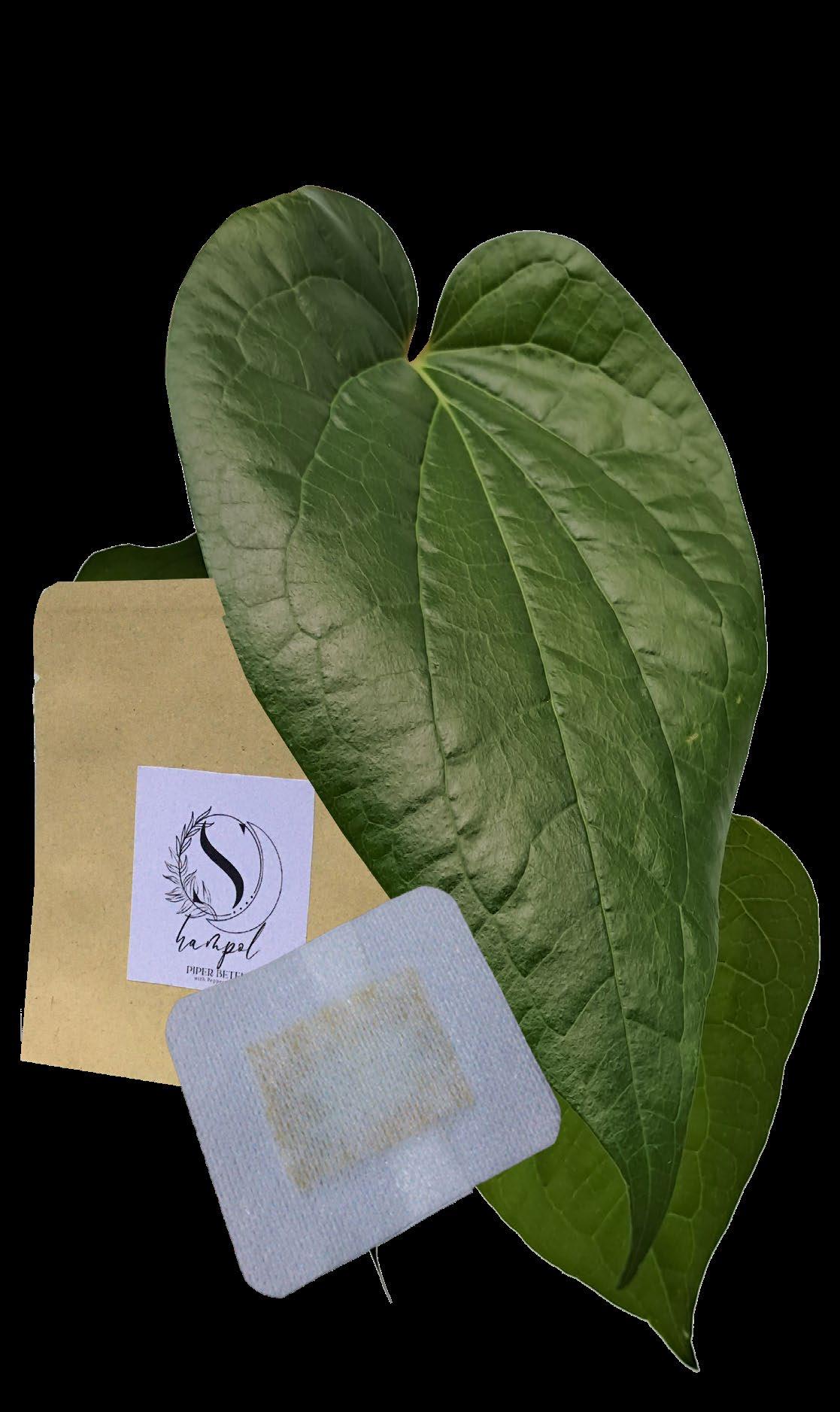
2 minute read
Piper Betel Leaf
from SCROLL 2023
by wayneklyde30
The New Muscle Relief
Judie Mae C. Belonio
Advertisement
Mother nature is known for its bountifulness when it comes to herbal plants that can be seen anywhere even in our own backyard. Who would ever wonder that a simple betel vine commonly used as a mouth freshener for its aromatic flavor and a peppermint could be transformed as a transdermal skin patch to treat muscle pains.
Piper betel to help you feel better!
Piper betel leaves possess different health benefits against cancer, allergic reactions, healing wounds, preventing growth of fungi, and can also be used as an antioxidant. Knowing how beneficial this plant is, the young mind of a student named Samantha Gumawa from Saint Lorenzo School of Polomolok (SLSPI), found a way to turn piper betel leaves into an effective product that aims to relieve muscle pains.
Tension, stress, minor injuries, and overuse of the muscles are some of the common causes muscle pain. The systemic muscle pain that spreads throughout the body is commonly caused by an illness, a side effect of a medication, or an infection. As Gumawa conducted her research on these piper betel leaves, she discovered that its extract contained an anti-inflammatory effect and a peppermint oil that has a cooling sensation that can treat muscle contractions that causes pain.
Patch the pain away.
Through the process of preparation, extraction, combining, and packaging, the personalized transdermal skin patches were created. The product was a 4.5 cm square skin patch containing piper betel leaf extract intended to help six people who have suffered from muscle pains. These chosen respondents wore the formulated transdermal skin patch for 12 hours.
Each respondent’s observations regarding their experience using the treatment product were averaged together. It showed great results with regard to the effectiveness of the time the patches were used. The effectiveness has contradicted the null hypothesis and shown great potential for treating pain in the muscles.
A product for all.
To provide the groundwork for future studies who would explore the potential benefits of Piper betel leaves and peppermint as transdermal skin patches, Gumawa has passionately spent an estimated 60 days to finish this study. The transdermal skin patches’ efficacy and innovation were projected by Saint Lorenzo School of Polomolok to benefit not just the school but also the community.
SLSPI utilizes different products from the research of its students to achieve its full potential to serve as a contribution to the society.
Have you ever heard of the material used as controller of oil spills in bodies of water? Material that is utilised and processed to make ropes, mats, brushes, and mattresses. Also used as a substrate for hydroponics. A natural material that comes from coconut. An agricultural by-product obtained during the processing of coconut oil that is widely accessible in tropical regions particularly in Africa, America, and Asia. Actually, the Philippines is regarded as the second-largest producer of this in the globe. Is recurrently discarded as waste but is greatly beneficial. It is coir fibre.
Plastic pollution has become one of the most relevant environmental problems, as the greatest ability of the world to deal with it is being overwhelmed by the global modernization and exponentially growing production of plastic items. With regard to this, the unending prevalence of microplastics has also devoured the globe — polluting bodies of water and intoxicating marine animals. In reference to (Administration, National Oceanic and Atmospheric, 2021), the most common type of marine debris found in oceans, lakes, and other bodies of water is plastic. Plastic debris comes in all shapes and sizes, but those less than five (5) mm long are referred to as microplastics. Unconsciously, commercial cellulose sponges that you use in your household are considered as one of the most contributors of microplastics around the world. These are dangerous not only for our health but also for the environment because as dishes are being washed, tiny pieces of plastic are being scrubbed off then get washed down the drain. Since they are so small, they









